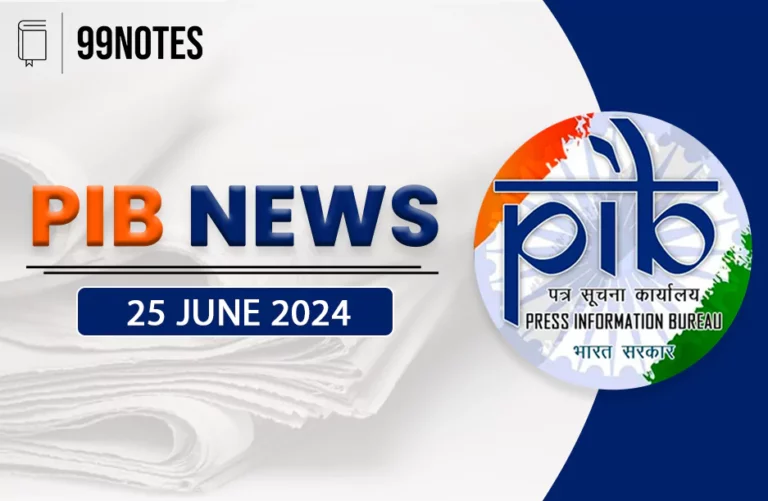10 May 2024 : PIB Summary for UPSC
1. INDIAN NAVAL SHIPS DELHI, SHAKTI, AND KILTAN COMPLETED THEIR VISIT TO SINGAPORE.
| Topic: GS2 – International Relations – Bilateral Relations. |
| Context |
| ● Indian Naval Ships Delhi, Shakti, and Kiltan visited Singapore from 6th to 9th May 2024, part of the Eastern Fleet’s deployment to the South China Sea.
● The visit aimed at bilateral engagement, enhancing maritime security, and fostering naval cooperation between India and Singapore, including educational outreach activities. |
Analysis of the news:
- Indian Naval Ships Delhi, Shakti, and Kiltan conducted a visit to Singapore from 6th to 9th May 2024 as part of the Operational Deployment of the Indian Navy’s Eastern Fleet to the South China Sea.
- The visit aimed at bilateral engagements, discussing mutual interests, and reaffirming commitment to enhance maritime security and stability in the region.
- Discussions focused on enhancing naval cooperation and interoperability between India and Singapore.
- A deck reception hosted onboard INS Shakti facilitated interactions between personnel from both navies, the Indian diaspora in Singapore, and the local diplomatic community, fostering friendship and mutual respect.
- Local school children were invited to visit the Indian Ships as part of the Indian Navy’s commitment to maritime education and outreach.
- Guided tours of the ships provided insights into naval operations, India’s maritime history, heritage, and the significance of maritime security.
- Interactions aimed to inspire the younger generation and promote a deeper understanding of maritime affairs.
- Personnel from both navies engaged in cross-ship visits and Subject Matter Expert Exchanges (SMEE), along with other professional interactions, further strengthening bilateral ties.
| India – Singapore Relations: |
| India – Singapore Relations:
● Historical Roots: India and Singapore share deep commercial, cultural, and people-to-people ties dating back over a millennium, with modern relations attributed to Sir Stamford Raffles’ establishment of a trading station in Singapore in 1819. ● Official Recognition: India was among the first countries to recognize Singapore in 1965. ● Bilateral Mechanisms: Over 20 regular bilateral mechanisms, dialogues, and exercises exist between the two nations, covering a broad range of areas including digital connectivity, fintech, green economy, skill development, and food productivity. ● Ministerial Roundtable: A new high-level Ministerial mechanism, the India-Singapore Ministerial Roundtable (ISMR), was established in 2022 to discuss enhancing bilateral relations, focusing on emerging areas such as digital connectivity and green economy. ● Key Agreements: Several agreements have been concluded, including the Comprehensive Economic Cooperation Agreement, Double Taxation Avoidance Agreement, Bilateral Air Services Agreement, and Defense Cooperation Agreement, among others. ● High-Level Interactions: Regular high-level visits and interactions have strengthened the Strategic Partnership, with Prime Minister Modi’s visits in 2018 marking significant milestones. ● Economic Cooperation: Singapore is India’s largest trade partner in ASEAN, with bilateral trade expanding significantly over the years. Singapore is also a major source of FDI and External Commercial Borrowings for India. ● Investment: Singapore has made significant investments in India across various sectors, including technology, startups, and infrastructure. ● Connectivity: Direct air connectivity has been expanded, and tourism between the two countries has grown steadily. ● Science & Technology Cooperation: Collaboration in areas such as space research and artificial intelligence has been prominent, with joint initiatives between Indian and Singaporean institutions. ● Cultural Exchange: Regular cultural exchanges, language teaching, and youth exchanges contribute to fostering cultural understanding between the two nations. ● Diaspora: The Indian diaspora in Singapore is significant, contributing to various sectors of the economy and maintaining cultural ties between the two countries. Challenges in India-Singapore Relations: ● Geopolitical Dynamics: Balancing relations with other regional powers, such as China, and navigating geopolitical tensions in the Indo-Pacific region. ● Trade Imbalances: Addressing trade imbalances and barriers to market access to promote more equitable economic cooperation. ● Cybersecurity Concerns: Mitigating cybersecurity risks and protecting critical infrastructure from cyber threats and espionage activities. ● Regional Security Challenges: Collaborating to address regional security challenges, including maritime security, terrorism, and non-proliferation. ● Differences in Policy Priorities: Managing differences in policy priorities and approaches on issues such as human rights, democracy, and regional integration. ● Infrastructure Development: Overcoming challenges in infrastructure development and connectivity projects to enhance regional trade and economic integration. |
| PYQ:
Q.1 South China Sea has assumed great geopolitical significance in the present context. Comment. (200 words/12.5m) (UPSC CSE (M) GS-1 2016) Q.2 With respect to the South China sea, maritime territorial disputes and rising tension affirm the need for safeguarding maritime security to ensure freedom of navigation and over flight throughout the region. In this context, discuss the bilateral issues between India and China. (200 words/12.5m) (UPSC CSE (M) GS-2 2014) |
| Practice Question: Discuss the geopolitical significance of the South China Sea and the challenges it poses to regional security. How do competing territorial claims by multiple nations affect maritime stability, and what measures can be taken to address these issues? (250 Words /15 marks) |
2. India’s Technical Textiles market has huge potential backed by a significant growth rate of 10%: Textiles Secretary
| Topic: GS3 – Indian Economy – Changes in industrial policy and their effects on industrial growth. |
| Context |
| ● The Ministry of Textiles, organised a National Symposium in New Delhi on advancements in composites, specialty fibres, and chemicals.
● Discussions highlighted India’s growing technical textiles market, strategic decision-making in selecting fibres, and applications across sectors like aerospace and railways. |
Analysis of the news:
- The Ministry of Textiles, along with Confederation of Indian Industry (CII) and Ahmedabad Textile Industry’s Research Association (ATIRA), organised a National Symposium on Advancements in Composites, Speciality Fibres, and Chemicals in New Delhi.
- Rachna Shah, Secretary of the Ministry of Textiles, highlighted India’s significant growth rate of 10% in the Technical Textiles market, ranking it 5th globally.
| What are technical textiles? |
| ● Technical textiles are textiles engineered for performance rather than aesthetics.
● They are designed with specific functional properties to serve various industries such as automotive, aerospace, healthcare, and construction. Examples include fabrics with flame resistance, waterproof membranes, and reinforcement materials like carbon fibres. |
- Vijay Kumar Saraswat, Member of NITI Aayog, emphasised the strategic decision-making involved in selecting specialty fibres for advanced composites, considering both performance requirements and cost considerations.
- He discussed various applications of specialty fibres like aramids, carbon fibre, in sectors such as infrastructure, aerospace, automotive, defence, and medical devices.
- Discussions also involved the use of geotextiles and geo-composites in the railways sector, highlighting their applications in load bearing, erosion protection, and drainage.
- The potential of the technical textiles industry to drive productivity and innovation was highlighted, outlining guidelines under the NTTM mission.
| The National Technical Textiles Mission (NTTM): |
| ● The National Technical Textiles Mission (NTTM) spans from 2020-21 to 2023-24 with a budget of Rs. 1480 crores.
● Fund distribution: Rs. 1000 crores for Research Innovation & Development, Rs. 50 crores for Promotion and Market Development, Rs. 400 crores for Education, Training, and Skilling, Rs. 10 crores for Export Promotion, and Rs. 20 crores for administrative expenses. ● Focus areas include usage of technical textiles in flagship missions like Jal Jivan Mission, Swachh Bharat Mission, and Ayushman Bharat for improving cost economy, water and soil conservation, and agricultural productivity. ● Promotion of innovation among young engineers and graduates, creation of innovation and incubation centres, and support for startups. ● Research on bio-degradable technical textiles, development of indigenous machinery, and process equipment to promote ‘Make In India’. ● Six skill development courses in Technical Textiles sector on boarded on NSQF for training. |
- The symposium witnessed participation from various stakeholders, including government officials, industry leaders, researchers, and professionals, totaling around 150 attendees.
| Different uses of Technical textiles: |
| ● Protective Clothing: Technical textiles are used in protective clothing for various industries, including firefighting, healthcare, and hazardous material handling.
● Geotextiles: They are employed in geotechnical engineering applications such as erosion control, soil stabilisation, and drainage systems. ● Automotive Textiles: Technical textiles find applications in automotive manufacturing for seat belts, airbags, upholstery, and interior trims. ● Sports and Leisure: They are utilised in sports equipment like tents, sails, ropes, and sports apparel due to their durability and performance-enhancing properties. ● Medical Textiles: Technical textiles are used in medical devices, implants, wound dressings, and surgical gowns for their biocompatibility and antibacterial properties. ● Agricultural Textiles: They find applications in agriculture for crop protection, greenhouse coverings, shade nets, and soil erosion control. ● Construction Textiles: Technical textiles are used in construction for reinforcing materials, insulation, roofing membranes, and concrete reinforcement. ● Packaging: They are employed in packaging materials such as flexible intermediate bulk containers (FIBCs), protective packaging, and industrial packaging due to their strength and durability. |
| Practice Question: Discuss the significance of technical textiles in India’s industrial landscape, highlighting their role in sectors such as aerospace, automotive, and infrastructure. How can the promotion of technical textiles contribute to the country’s economic growth and innovation? (250 Words /15 marks) |



